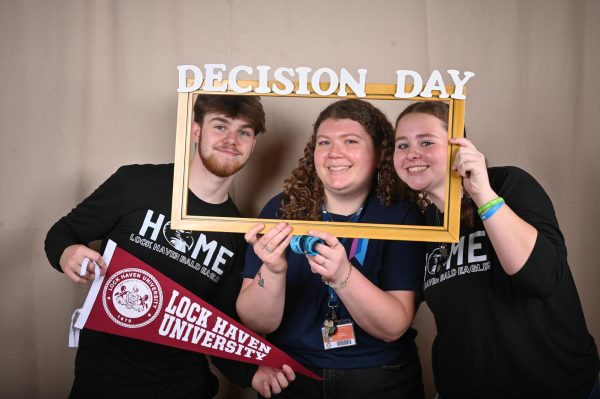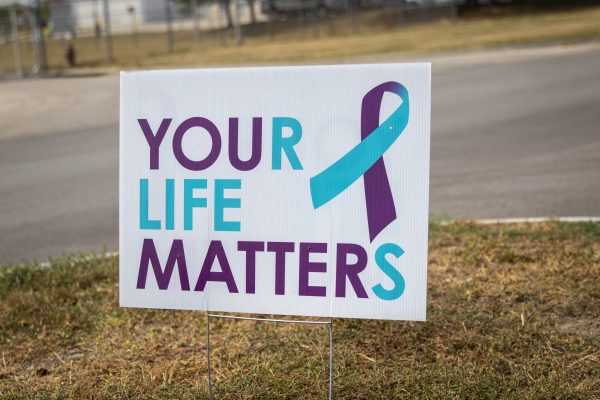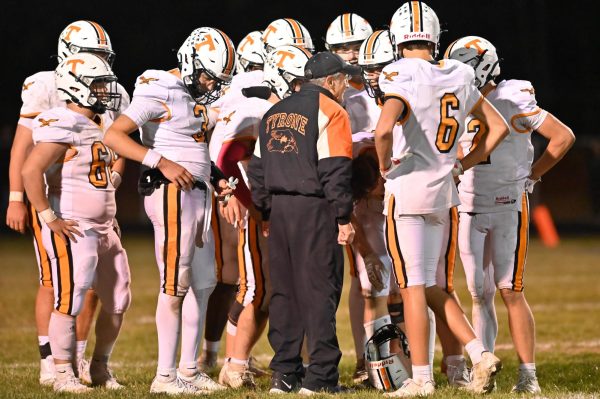Editorial: Keep Religion Out of Public Schools
Olivia Bietz
Christianity, Judaism, Islam, Buddhism, Mormonism: all different types of religious practices.
Preschool, elementary school, middle school, high school: all different types of educational institutions.
Both have their own sets of rules, or beliefs. Both have their own sets of schedules for schooling, or worshipping. The list of manifold differences goes on and on; however, I firmly believe that religion and education should not be tied together while remaining separate in public schools.
First of all, there are specific reasons why public schools are free to those residing in its district while private schools charge tuition for those who desire to attend. Public schools are bound by the Constitution from teaching religion— separation of church and state. Schools are owned by the state they inhabit; therefore, proving it illegal to teach religion in public schools.
However, private schools may specifically educate those enrolled on a certain religion. The difference is, with regards to the costs involved, no tuition is involved in public education institutions for students living in the school’s area. Furthermore, all students are receiving schooling on scientifically proven facts and theories. Private religious institutions teach beliefs, and cost money. If you are offended that your child is not receiving education on your certain religion practices and beliefs, or that they are being taught evolution in their biology class, then fork out your own money to send them to a private educational establishment.
Albeit, I am not saying that practicing religion in public schools should be prohibited. If your child attends a public school and implements a particular religion, then they should be allowed to pray between classes and before lunch, establish and attend religious groups before and during after school hours, etc. All students should be permitted the right to pray in public school, just as they should be in any public setting. Still, religion should only be taught in private schools.
Additionally, religion should stay separate from public schools because of the diverse amount of religions within the world. According to the editors of World Christian Encyclopedia: A Comparative Survey of Churches and Religions – AD 30 to 2200, a total of 19 major religions, which are subdivided into 270 large religions (including some smaller ones), make up the worldwide religious population.Throughout the global population of religions are as follows: 31.5% (2.2 billion) Christians, 23.2% (1.6 billion) Muslims, 16.3% (1.1 billion) Unaffiliated, 15% (1 billion) Hindus, 7.1% (500 million) Buddhists, 5.9% (400 million) Folk Religionists, 0.8% (58 million) Other Religions, and 0.2% (14 million) Jews.
Granted, the Christian religious group is the largest in the world, and is the main religion practiced in the United States. However, Christianity has a large variety of denominations. The four largest ones include Orthodox, Catholic, Protestant, and Anglican. From these, separate churches branch. As you can see, there is such a broad spectrum to consider when thinking about teaching religion in schools that it would seem completely vacuous to focus on one specific religion based on the “majority” of a belief in public schools. For example, say that your school includes 60% Orthodoxes, 20% Catholics, 5% Protestants, and 5% Anglicans. From this, one can conclude that the majority of your school’s beliefs are based on the Orthodox religion. However, each subdivision of Christianity contains smaller subdivisions.
Now, what if several new students join your school, and their beliefs are centered around the Muslim religion? How will these students adapt to the Christianity beliefs that your school is based on? They can’t. It is completely unrealistic to think that Muslim students will agree to be taught the beliefs of a religion that they do not practice. Even more, I can conclude that you would not agree to be taught Muslim beliefs if you moved to a different school district and practiced the Christian religion.
Based on the above, I presume that the decision to include or exclude religion in education should go without saying. Due to obvious reasons for separation of public and private schools and because of diverse cultures in not only America but the world, religion should refrain from being taught in public educational establishments, and should stay within the confines of religious-based, for-profit private schools and religious sanctions. Otherwise, forcefully being taught a religion you don’t personally believe in may as well be considered manipulation instead of education

Hello, I’m Olivia Bietz and I am a freshman writer for the Eagle Eye newspaper this year. I’m involved in several extra-curricular activities at Tyrone,...

Hi, my name is Haley Wagner. I am a sophomore this year. I'm a member of the Dance Fusion Competition Team and this year I am in 7 competition dances,...














Elizabeth Hill • May 1, 2015 at 1:47 am
While this is interesting, and I do agree on your view that no specific religion should be catered to within a school district, what do you say to a World Religion class? It’s as much history as it is actual religion. And, with that, all religions are equally(or tend to be) equally represented. Like I said, I agree but for the purpose of education and history, I wouldn’t completely abolish it from the curriculum. My main thing is, how can people learn and understand the concept of tolerance if they don’t even know what they’re talking about. So many people run their mouths about religions that they don’t understand, and if they took the time to learn about other religions (in a world religion course) it has the potential to help.
Linda Snyder • Apr 30, 2015 at 12:24 pm
Well done, Olivia. The United States Constitution is the law of the land and clearly mandates separation of church and state, so your article is right on based upon law. Your additional supporting reasons also demonstrate the respect all Americans must show for our country’s diversity. Thank you for an informative article.